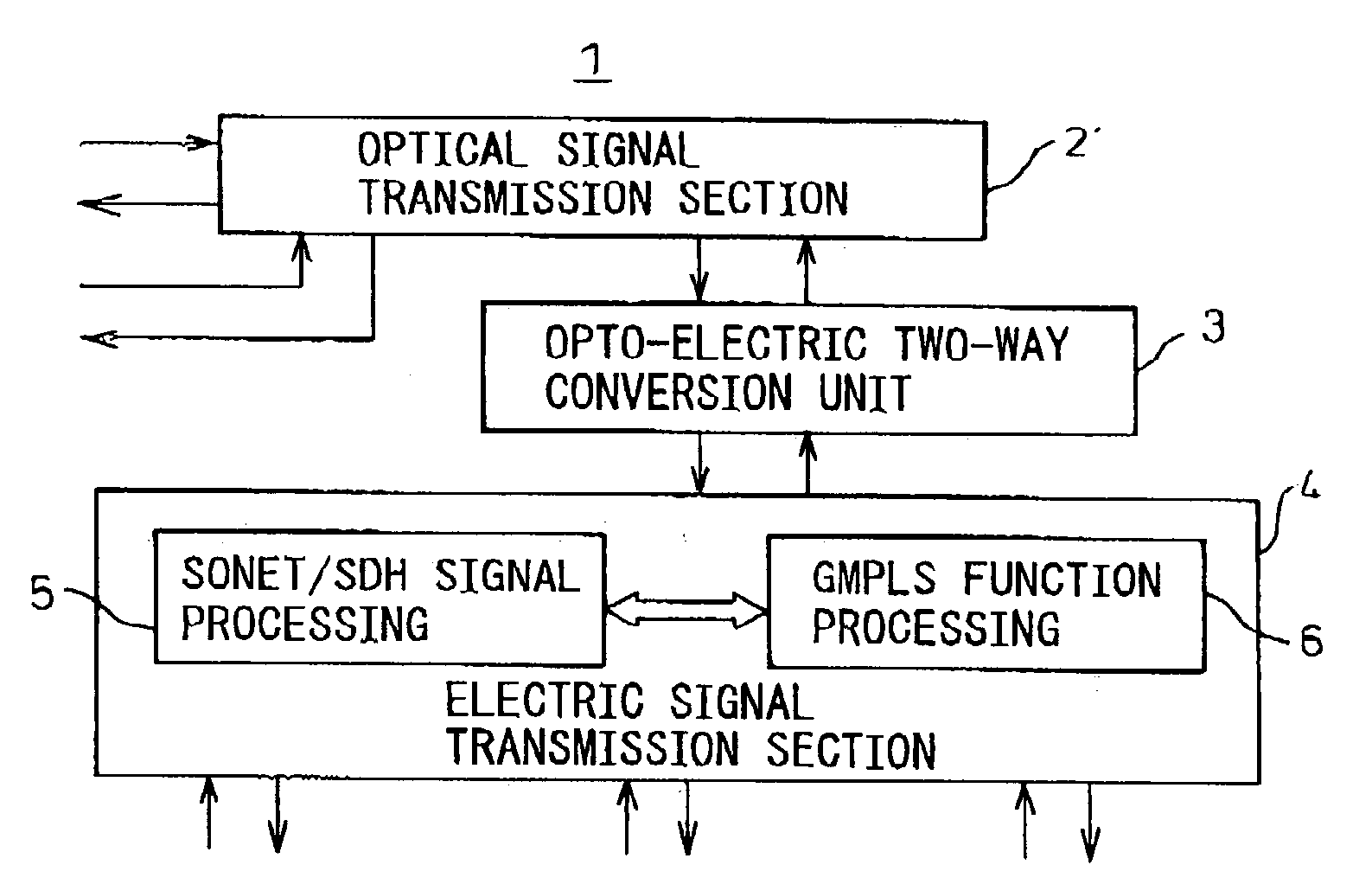Transmission apparatus
a technology of transmission apparatus and transmission device, which is applied in the direction of data switching network, frequency-division multiplex, instruments, etc., can solve the problems of not being able to fully manage the entire network, not being able to greatly reduce the capital cost and running cost of an optical network for transmitting ip signals, and not being able to achieve the effect of greatly reducing the capital cost and running cost of an optical network
- Summary
- Abstract
- Description
- Claims
- Application Information
AI Technical Summary
Problems solved by technology
Method used
Image
Examples
Embodiment Construction
[0182] Before explaining the detailed example, the differences between the prior art and present invention will be clarified.
[0183] As explained above, the characteristics of the LSR of FIG. 24 having a configuration closest to the present invention will be analyzed here. That is, the LSR collects the topology information of the entire MPLS layer including the topology of the optical network and uses this for integral network management.
[0184] That is, the TE topology database of FIG. 24 stores the topology information of the network as a whole. Topology information is swapped with different routers. The databases of all routers are combined for use. Therefore, the broader the range covered by the network, the larger the capacity of the database and further the more different routers have to communicate with each other. Therefore, the processing handled by traffic engineering control in the figure also ends up becoming heavier. The present invention provides a transmission apparatus...
PUM
 Login to View More
Login to View More Abstract
Description
Claims
Application Information
 Login to View More
Login to View More - R&D
- Intellectual Property
- Life Sciences
- Materials
- Tech Scout
- Unparalleled Data Quality
- Higher Quality Content
- 60% Fewer Hallucinations
Browse by: Latest US Patents, China's latest patents, Technical Efficacy Thesaurus, Application Domain, Technology Topic, Popular Technical Reports.
© 2025 PatSnap. All rights reserved.Legal|Privacy policy|Modern Slavery Act Transparency Statement|Sitemap|About US| Contact US: help@patsnap.com



